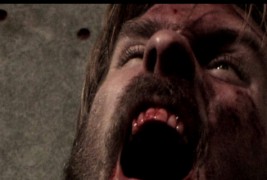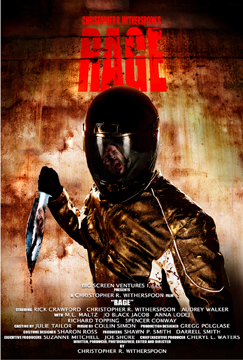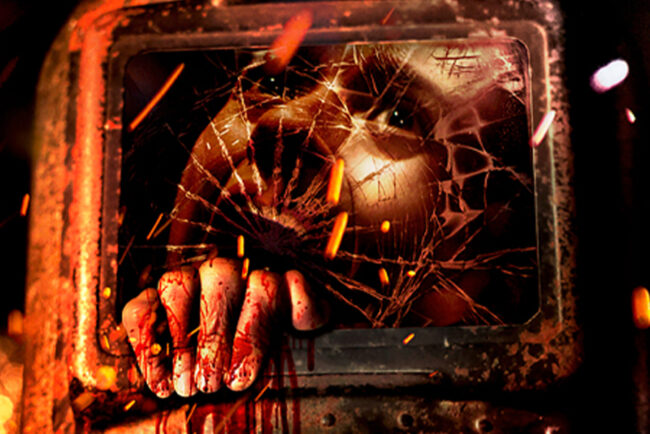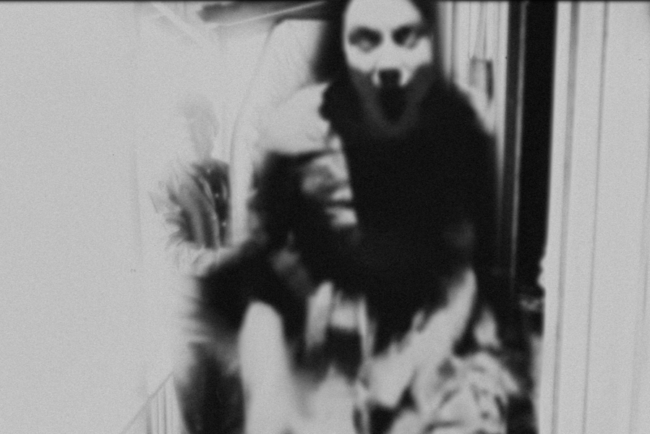
Filmmaker Chris Witherspoon’s Rage is a small-budget exploitation thriller that packs a punch much larger than its budget would suggest. Taut storytelling, tension so high it requires a parachute, and explosively violent action propel Rage past a significant portion of its indie peers. Witherspoon’s got the directorial chops to do whatever his resources will allow him to do. Moreover, if this movie is any indication, not even the confines of a small budget are enough to limit the success of his old school exploitation aesthetic.
Rage begins as Dennis Twist (Rick Crawford) kisses his wife Crystal (Audrey Walker) goodbye and heads out on a “routine” trip to Portland, Oregon. When he arrives, we learn he’s actually there to rendezvous with his mistress, Dana (Anna Lodej). But this time Dennis tells Dana that he loves his wife and that their tryst must stop. She thinks Dennis is ending the affair because he’s being harassed by her ex-boyfriend, an ex-con with violent tendencies. And when Dennis notices he’s being stalked by a mysterious biker, he thinks she may be at least partially correct.
During Dennis’s day in the city, he and the biker cross paths more and more frequently. The encounters become increasingly disturbing, beginning with vandalism and exploding into violence and worse. Can Dennis escape the biker, leave the city and get back to his wife with his secret intact? Who is this biker and what does he want? Rage culminates in a disturbing and bloody climax, rending flesh as well as trust.
As an action film, Rage is wonderfully photographed, scored, and edited. Those elements shine because the premise is a simple set up, one that Witherspoon optimizes to weave a tight tale of suspense and violence. Narrative complexity doesn’t get in the way of his concise visual and aural representation of the film’s main tension. It’s storytelling via film at its purest. As such, it’s a wonderful throwback to the exploitation flicks of forty years ago such as Duel, which is referenced here explicitly, as well as films like The Car, The Hitcher, and even some more recent fare such as Alexandre Bustillo’s Inside.
Rage’s more subtle scenes expose the areas in which Witherspoon may need some work. Most of the low key scenes involving dialogue are awkward, a byproduct of poor rhythm or pace. It’s a strange-but-evident problem, strange because of how incredibly well the action sequences are composed, and evident because the conversations featured in these scenes seem completely alien.
Like many indie films the cast of Rage is a little inconsistent, but deserves high marks overall. The film features actors that have relatively little feature film experience, a common trait for movies of this stature. And while the aforementioned editing problems do render some scenes a bit strange, by and large, even those aren’t marred by bad acting.

One of the best performances is by Richard Topping who plays Stan, an associate of Rage’s protagonist, Dennis. Topping isn’t onscreen much at all, so the sample size is pretty miniscule, but for the short duration he’s featured, he’s a natural and exudes an onscreen presence that’s impossible to ignore. Rick Crawford’s Dennis is also well-portrayed. In fact, much of Rage’s success resides on Crawford’s shoulders and though he’s featured in some of those awkward dialogue scenes, he succeeds in carrying the emotional heft of the film.
Once the premise of Rage is established, suspense and white knuckle action rule the day. Witherspoon uses everything his locations have to offer in concert with a clever sound motif and brilliantly shot cat-and-mouse sequences to tighten the screws to near-unbearable levels. He establishes a fundamental source of tension and then straps us in and piles on. By the time the tension is released, resolved, or broken, Rage has wreaked havoc on the senses. It’s a viscerally exhausting experience, and one that’s required for a movie of this type to be considered a success. After coming out the other side of this story a little weary, but otherwise okay, it’s abundantly clear that Rage is the quintessential thriller, a film that defines the term.
Director Chris Witherspoon has been involved with several movies and in a variety of capacities, from FX work on Troll, Re-Animator, and From Beyond to doing whatever was asked on the sets of Ghost Soldiers, Angel, and Hollywood Vice Cop. But it’s his latest venture atop the filmmaking totem pole as a writer/director/producer/actor that showcases his incredible potential.
Rage is the type of movie that’s immediately infectious. Whether viewed on some obscure channel at 2:00 AM or seen inside a small theater with sticky floors, it’s a gratifying experience. If you can ignore its flaws – the occasionally awkward dialogue, the over abundance of flashbacks to things we’ve just seen, and the one-too-many dream sequences, Rage is a lightning fast, teeth-clencher of a movie. Witherspoon knows how to elicit heart-palpitating tension, pulling out all the classic framing devices employed by such suspense luminaries as Hitchcock and Spielberg and using them like Bobby Flay uses the spice rack. The results are impressive, entertaining, and exciting. Here’s to eagerly anticipating the next project from Chris Witherspoon and his company, Big Screen Ventures.














